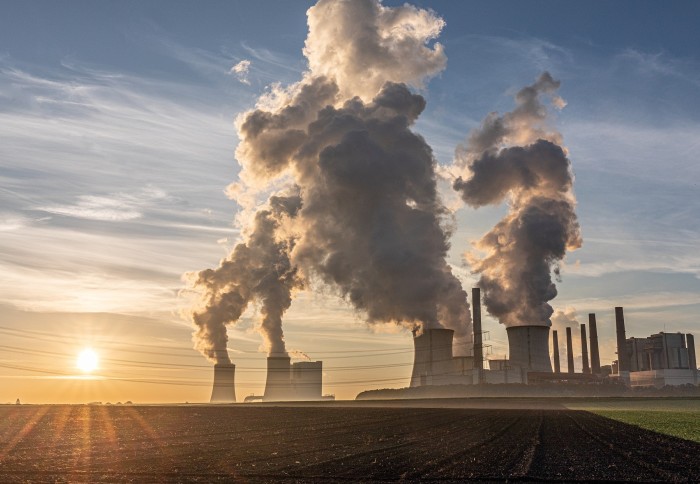

How can the field of chemical engineering help to achieve the climate goals outlined at COP26?
Chemical Engineering has been demonstrated to be a powerful tool to help create solutions to a wide range of environmental problems. In the wake of COP26, Imperial College London’s chemical engineers are helping to shape the future and ensure that the goals of COP26 are met.
The 26th annual Conference of the Parties (COP26) was held in Glasgow in November in a critical attempt to limit the impact of climate change and to create goals to keep the 1.5C target in sight.
The 1.5 degree target refers to the average rise in global temperatures which, if exceeded, is predicted to result in catastrophic disruptions to the natural world, including exacerbated flooding, extreme weather events, drought, hunger and conflict worldwide alongside global extinctions.
The Glasgow Climate Pact can only keep 1.5C in sight if countries take concerted and immediate action to deliver on their commitments. This means phasing down coal power, halting and reversing deforestation, speeding up the switch to electric vehicles and reducing methane emissions.
So what projects are Imperial’s Department of Chemical Engineering working on to help ensure these goals are achieved?
Phasing out coal
Burning coal to generate electricity produces toxic gases which include methane and carbon dioxide. These are two of the biggest contributors to climate change. Phasing out fossil fuels, such as coal and replacing them with renewable energy sources is therefore crucial.
The conversion of sunlight into chemical energy to produce synthetic fuels, known as solar fuels, offers one promising solution towards a sustainable energy system.
In research published in ChemSusChem last year, scientists found a highly versatile and sustainable alternative catalyst to be used in solar-energy conversion, with predicted long-term improvements for energy system decarbonisation.
Artificial photosynthesis is a mechanism of solar-energy conversion which relies on photochemical reactions; where a chemical reaction is initiated through the absorption of light energy. This process requires a substance to increase the rate of the chemical reaction without itself undergoing any permanent change, known as a catalyst. Catalysts currently used in the production of solar fuels have significant limitations, prompting research into the development of a catalyst that is activated under light, called a photocatalyst, that is efficient, robust and sustainable.
Through their study, the team discovered the potential of organic photocatalysts known as hyper-crosslinked polymers (HCP) for solar fuel production. This means solar fuels can be produced more sustainability to help aid the transition towards net zero emissions.
According to co-author Dr Camille Petit: “The use of purely organic and amorphous structure for photocatalysis opens up new areas for materials development and rationalisation of the reaction pathways.”
Read more about this research in the Imperial news article.
Speeding up the switch to electric vehicles
Road transport accounts for over 10% of global greenhouse gas emissions, and around half the world’s consumption of oil. The decarbonisation of road transport could lead to a reduction of 2.6 gigatonnes of carbon dioxide a year by 2030.
To help address this challenge, Imperial’s Titirici Group are working on various projects specifically associated with battery and fuel cell technology to power electric vehicles.
Their research on batteries so far focuses on alternatives to current technologies that are cheaper, more sustainable and achieve higher energies than our existing energy systems. For example, the group is developing novel and sustainable carbon materials to be used in key energy storage technologies such as sodium-ion (Na-ion) batteries, sodium-metal (Na-metal) batteries, lithium-sulphur (Li-S) batteries and mixed-ion systems.
Sodium-ion batteries have shown great potential as a cost-effective successor to the current lithium-ion batteries, particularly for large-scale, low-cost electrical energy storage applications. They are highly advantageous as sodium is well distributed and abundant around the globe, they are far cheaper and the processing system is identical, meaning the production of sodium-ion batteries is a ‘drop-in’ technology.
The crucial work of the Titirici Group on batteries and fuel cells will help transform the transport sector from powering electric bikes and local transport in the immediate future to long-term solutions in the industrial and aviation industry.
Reducing methane emissions
Typically in climate research often attention is given to the climate-warming greenhouse gas carbon dioxide. However, methane is also a powerful greenhouse gas, trapping 32 times more heat than carbon dioxide. Despite its obvious issues, previous COPs have failed to address global warming from methane – until now. At COP26, over 100 countries signed up to the Global Methane Pledge to reduce global methane emissions by 30% by 2030.
Investigations into reducing methane is another area of research conducted by Imperial’s chemical engineers. In a pioneering study, published in May 2021 in Waste Management in collaboration Royal Holloway University, scientists monitored methane emissions from ten UK biogas plants and found they could account for up to 3.8% of the country’s total methane emissions.
Lead author Semra Bakkaloglu from the Sustainable Gas Institute explained: “We need robust, consistent emission measurements, new technologies and legal requirements to be put into practice soon.”
From this crucial work, we now understand more about methane emissions from biogas plants and with more consistent surveying and measuring this can be reduced.
Read more about this research in the Imperial news article.
Working together using a ‘systems approach’
Professor Nilay Shah is Deputy Chair of the National Engineering Policy Centre’s Net Zero working group, and Professor of Process Systems Engineering at Imperial’s Department of Chemical Engineering.
He explained that a systems approach is a way of looking at how different elements of energy, industrial, transport and building sub-systems are connected. He said: “If low-carbon hydrogen is primarily produced to support industrial decarbonisation, a systems approach would consider the opportunities to integrate this with local transport.
In other words, low-cost, low-carbon hydrogen made at scale for industrial use can also power local buses and improve local air quality. By considering these interactions, we identify synergies and opportunities for improvements as well as risks and vulnerabilities to hedge against.”
Professor Shah believes that the ambition of stabilising the climate required unprecedented change across all sectors of the economy, at pace. He added: “It requires us to modify or replace a whole range of technologies and infrastructure. Understanding the interactions between these will be critical.
What’s also crucial is understanding how to time interventions so that the change is manageable, effective and resource-efficient. This is where a systems approach, rather than an approach relying on piecemeal projects, is vital.”
------
This article uses part of an Imperial News Story. To read the full Q&A with Professor Nilay Shah click here.
Article text (excluding photos or graphics) © Imperial College London.
Photos and graphics subject to third party copyright used with permission or © Imperial College London.
Reporter
Gemma Ralton
Faculty of Engineering

Contact details
Email: gemma.ralton@imperial.ac.uk
Show all stories by this author



